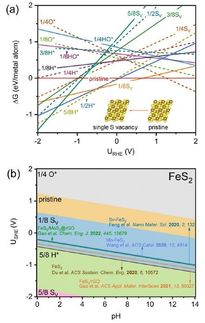Leaving the island: Unusual desorption behavior on the surface of catalysts
Advertisement
The desorption of reaction products, for example, from the surface of an exaust catalyst, up to now was looked upon as a simple random process. Following this theory, the desorption events should be distributed randomly over the entire surface. However, many measurement results contradicted this conceptual model. A team of physicists from the Technische Universitaet Muenchen (TUM), the Ludwig-Maximilians University Muenchen (LMU) and the Syncrotron Elettra in Trieste (Italy) has now discovered why.

Adsorbed oxygen forms dark islands on a silver surface.
Prof. Dr. S. Günther / TUM
The reactions on the surface of a catalyst, for example in the catalytic converter of a car, can be roughly divided into three steps: First, the reactants adsorb on the surface of the catalyst, followed by the actual reaction and the desorption of the products formed. A group of scientists led by Professor Sebastian Günther of the TUM, Professor Joost Wintterlin of the LMU, and Dr. Andrea Locatelli from Syncrotron Elettra in Trieste, has now managed to make such a desorption process microscopically visible.
Unlike the complicated processes that occur on the surface during the catalytic reaction itself, the process of desorption was thought to be relatively simple: The reactants gain thermal energy from the solid surface, and desorb as soon as this energy exceeds the binding energy to the surface. This picture suggests that desorption is a purely statistical process that only depends on the number of molecules. “However, in many cases, the desorption rates calculated using this model do not agree with the experimentally determined values,” says Joost Wintterlin.
Imaging with nanometer resolution
The experiments carried out by Günther, Wintterlin and their colleagues reveal that not only the number of adsorbed molecules but their spatial distribution on the surface is important. In their study, the team employed low-energy electron microscopy (LEEM), which allows one to image solid surfaces with nanometer resolution, to follow what goes on during the course of temperature-induced desorption. LEEM works similarly as conventional electron microscopy. The only difference is that the energetic electrons that form the beam are decelerated just before they hit the surface of the sample. With the help of this technique, the researchers were able to monitor desorption of oxygen from a silver surface.
“It turned out that, during desorption, the layer of absorbed molecules breaks up into many isolated islands, and desorption takes place exclusively from the edges of these islands,” says Sebastian Günther. Moreover, the size distribution of the islands depends on the pretreatment of the silver surface. “Together, these effects account for the discrepancies between theoretical predictions and experimental measurements of desorption rates reported in earlier studies. They probably play a role in many other processes involving desorption from surfaces, and could change our concepts of the processes on catalytic surfaces,” Günther adds.






























































